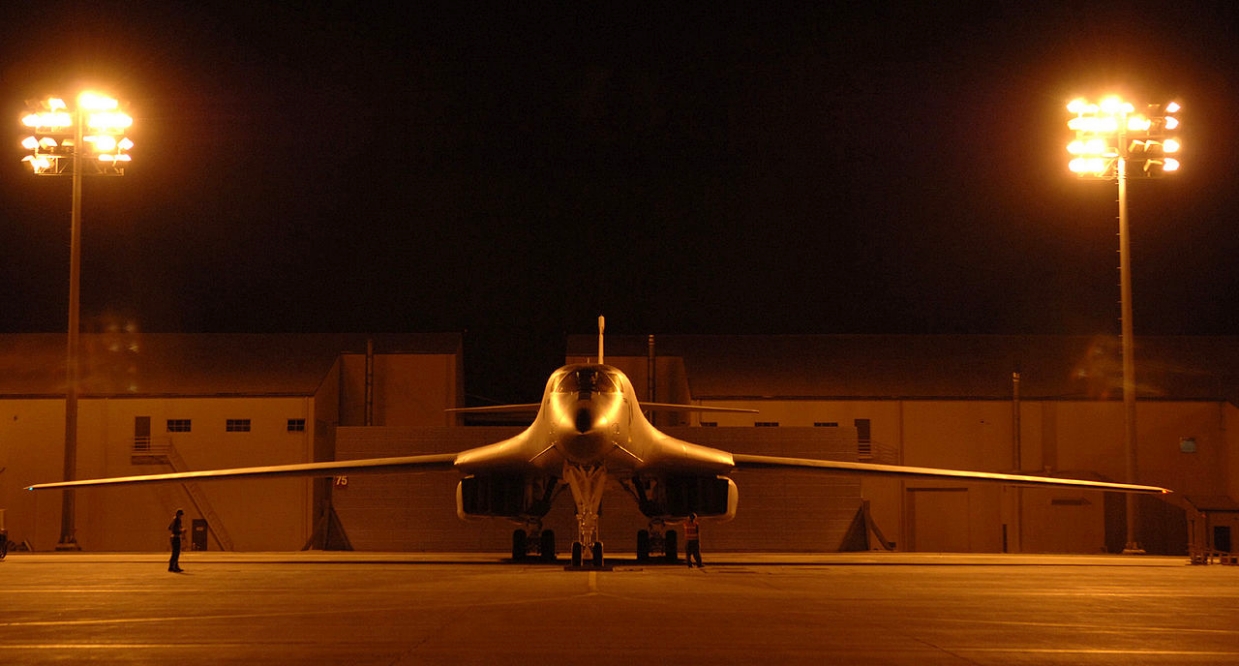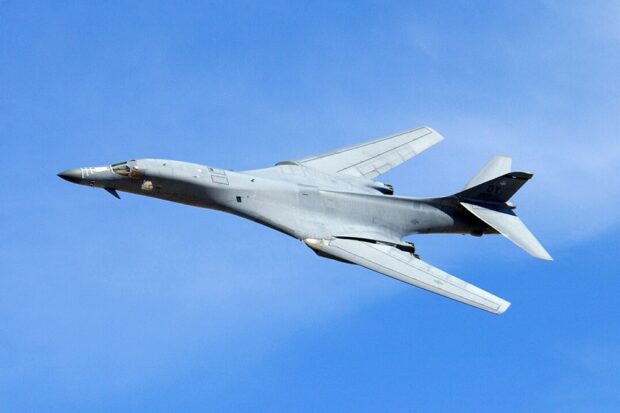The B-1 Lancer is not just any bomber. It is the most powerful bomber ever built. Featuring four rocket ship-like afterburner engines and supersonic speeds, get ready to learn about this remarkable aircraft.
The Rockwell B-1 Lancer is a supersonic variable-sweep wing, heavy bomber used by the United States Air Force. It has been nicknamed the “Bone” (from “B-One”). It is one of the Air Force’s three strategic bombers, along with the B-2 Spirit and the B-52 Stratofortress, as of 2024. Its 75,000-pound (34,000 kg) payload is the heaviest of any U.S. bomber.
The B-1 was first envisioned in the 1960s as a bomber that would combine the Mach 2 speed of the B-58 Hustler with the range and payload of the B-52, ultimately replacing both. After a long series of studies, Rockwell International (B-1 division later acquired by Boeing) won the design contest for what emerged as the B-1A. Prototypes of this version could fly Mach 2.2 at high altitude and long distances at Mach 0.85 at very low altitudes. The program was canceled in 1977 due to its high cost, the introduction of the AGM-86 cruise missile that flew the same basic speed and distance, and early work on the B-2 stealth bomber.
The program was restarted in 1981, largely as an interim measure due to delays in the B-2 stealth bomber program. The B-1A design was altered, reducing top speed to Mach 1.25 at high altitude, increasing low-altitude speed to Mach 0.96, extensively improving electronic components, and upgrading the airframe to carry more fuel and weapons. Dubbed the B-1B, deliveries of the new variant began in 1985; the plane formally entered service with Strategic Air Command (SAC) as a nuclear bomber the following year. By 1988, all 100 aircraft had been delivered.

A 28th Bomb Wing B-1B Lancer sits on the ramp in the early morning at Ellsworth Air Force Base, S.D., Aug. 30, waiting to taxi. The aircraft was taking off to conduct the first test launch of a joint air-to-surface standoff missile. U.S. Air Force photo by Airman Angela Ruiz
With the disestablishment of SAC and its reassignment to the Air Combat Command in 1992, the B-1B’s nuclear capabilities were disabled and it was outfitted for conventional bombing. It first served in combat during Operation Desert Fox in 1998 and again during the NATO action in Kosovo the following year. The B-1B has supported U.S. and NATO military forces in Afghanistan and Iraq. As of 2021 the Air Force has 45 B-1Bs. The Northrop Grumman B-21 Raider is to begin replacing the B-1B after 2025; all B-1s are planned to be retired by 2036.
Top Photo: A B-1 Bomber, 77th Weapons Squadron, Dyess Air Force Base, Texas, performs a fly by for the crowd during an Air Force Firepower Demonstration at Indian Springs Air Force Auxiliary Field, Nev., Oct 8. The Firepower Demonstration is held twice a year and gives the general public a glimpse into the Air Force’s ability to perform its wartime mission. USAF Photo by MSgt Robert W. Valenca
Sources: Wikipedia; YouTube

